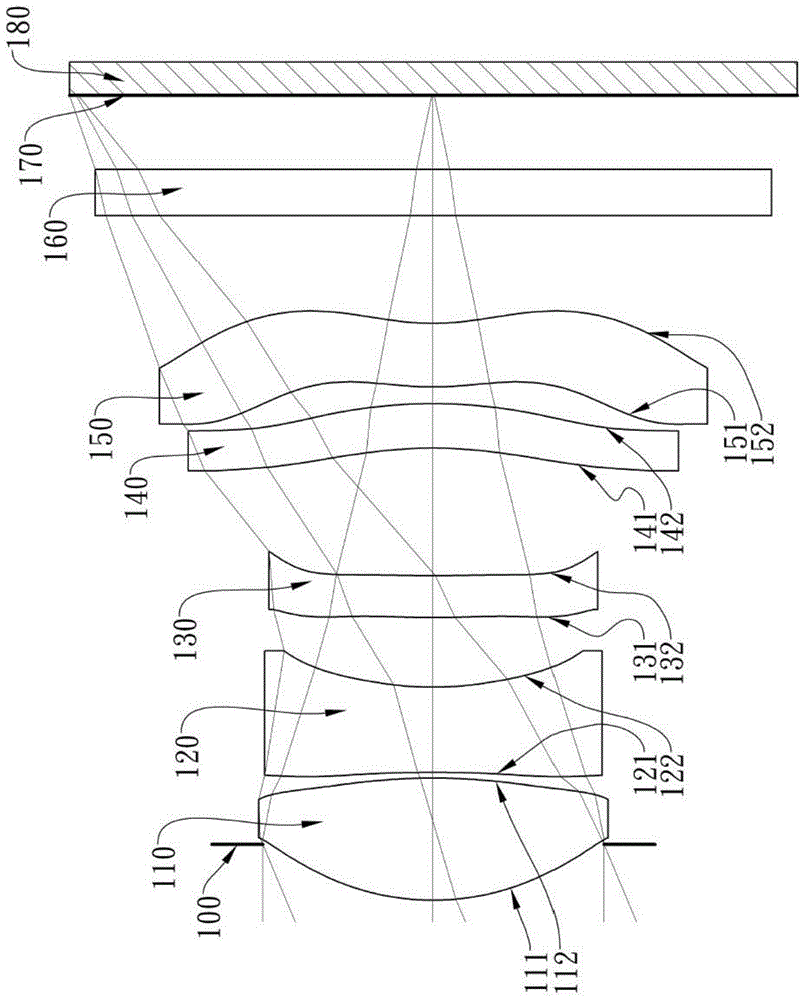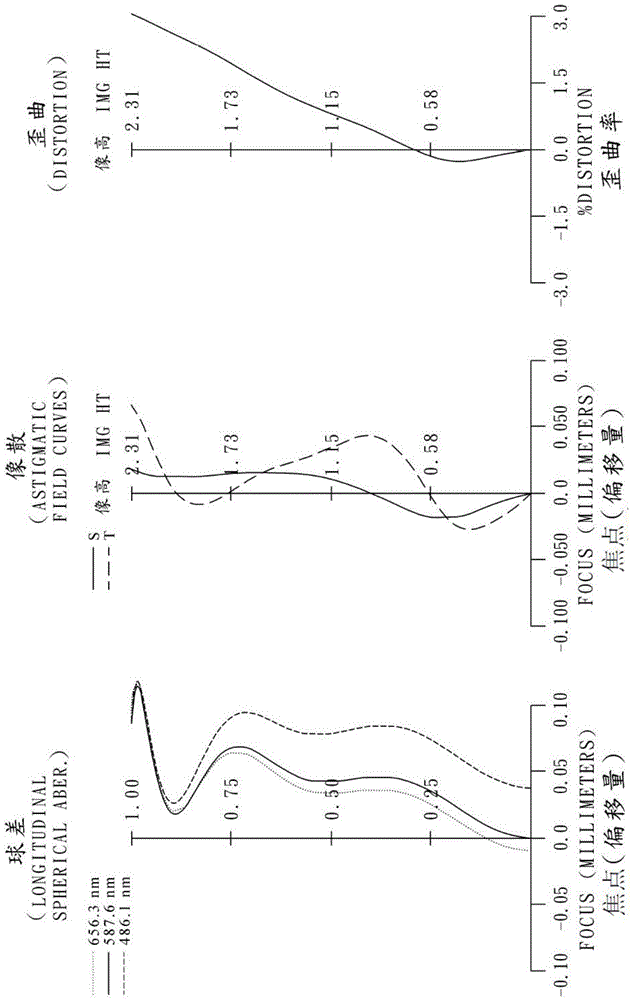Camera lens group, image capture device and electronic device
A technology of photographic lenses and lenses, applied in optical elements, optics, instruments, etc., can solve the problems of not easy to carry, insufficient space for beam travel, and large lens size.
- Summary
- Abstract
- Description
- Claims
- Application Information
AI Technical Summary
Problems solved by technology
Method used
Image
Examples
no. 1 example 》
[0135] Please refer to the first embodiment of the present invention Figure 1A , for the aberration curve of the first embodiment, please refer to Figure 1B . The imaging device of the first embodiment includes a photographic lens group (not otherwise labeled) and an electronic photosensitive element 180, and the photographic lens group is mainly composed of five first lenses 110, second lenses 120, and third lenses with refractive power. 130, the fourth lens 140 and the fifth lens 150, which sequentially include from the object side to the image side:
[0136] A first lens 110 with positive refractive power is made of plastic, its object side 111 is convex at the near optical axis, its image side 112 is convex at the near optical axis, and its object side 111 and image side 112 are both is aspheric;
[0137] A second lens 120 with negative refractive power is made of plastic, its object side 121 is concave at the near optical axis, its image side 122 is concave at the nea...
no. 2 example 》
[0170] Please refer to the second embodiment of the present invention Figure 2A , for the aberration curve of the second embodiment, please refer to Figure 2B . The imaging device of the second embodiment includes a photographic lens group (not otherwise labeled) and an electronic photosensitive element 280. The photographic lens group is mainly composed of five first lenses 210, second lenses 220, and third lenses with refractive power. 230, the fourth lens 240 and the fifth lens 250, which sequentially include from the object side to the image side:
[0171] A first lens 210 with positive refractive power is made of plastic, its object side 211 is convex at the near optical axis, its image side 212 is concave at the near optical axis, and its object side 211 and image side 212 are both is aspheric;
[0172] A second lens 220 with negative refractive power is made of plastic, its object side 221 is convex at the near optical axis, its image side 222 is concave at the nea...
no. 3 example 》
[0184] Please refer to the third embodiment of the present invention Figure 3A , for the aberration curve of the third embodiment, please refer to Figure 3B . The imaging device of the third embodiment includes a photographic lens group (not otherwise labeled) and an electronic photosensitive element 380. The photographic lens group is mainly composed of five first lenses 310, second lenses 320, and third lenses with refractive power. 330, the fourth lens 340 and the fifth lens 350, which sequentially include from the object side to the image side:
[0185] A first lens 310 with positive refractive power is made of plastic, its object side 311 is convex at the near optical axis, its image side 312 is concave at the near optical axis, and its object side 311 and image side 312 are both is aspheric;
[0186] A second lens 320 with negative refractive power is made of plastic, its object side 321 is convex at the near optical axis, its image side 322 is concave at the near o...
PUM
 Login to View More
Login to View More Abstract
Description
Claims
Application Information
 Login to View More
Login to View More - R&D Engineer
- R&D Manager
- IP Professional
- Industry Leading Data Capabilities
- Powerful AI technology
- Patent DNA Extraction
Browse by: Latest US Patents, China's latest patents, Technical Efficacy Thesaurus, Application Domain, Technology Topic, Popular Technical Reports.
© 2024 PatSnap. All rights reserved.Legal|Privacy policy|Modern Slavery Act Transparency Statement|Sitemap|About US| Contact US: help@patsnap.com










